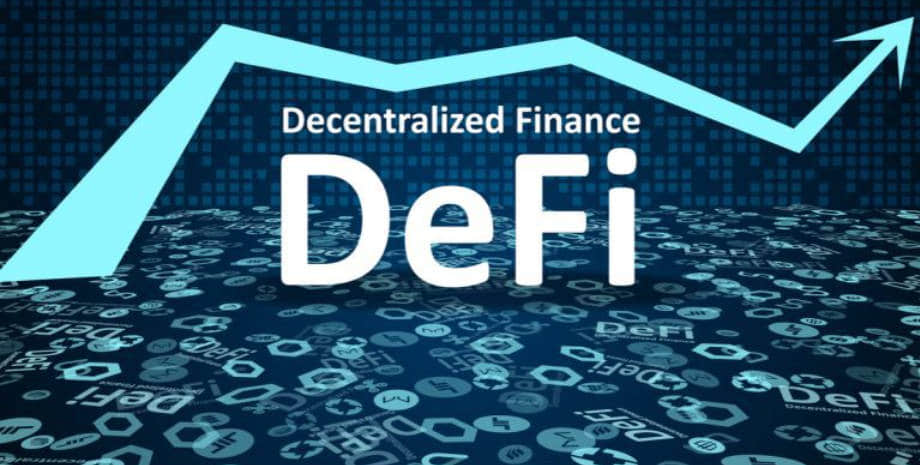A Quick Understanding of the ‘Profitable’ L2 Blast Launched by the Founder of Blur Where Does the Profit Come From? What Are the Doubts?
Unpacking the 'Profitable' L2 Blast from Blur's Creator Sources of Profit and Addressing DoubtsAuthor: Wu Shuo | defioasis
Editor: Colin Wu

On November 21st, while announcing the end of Blur S2 and the start of S3, Blur founder LianGuaicman launched L2 Blast, an underlying layer with native yield for ETH and stablecoins based on OP Rollup, as well as the BLUR staking system. Blast raised $20 million from investors like LianGuairadigm and Standard Crypto. With the incentive of an invitation mechanism and a point system representing a significant token airdrop, as of November 26th, in less than 6 days, Blast has attracted over $520 million in funds, including over 220,000 ETH deposited in Lido and over 64 million DAI in Maker DSR. When compared to other L2 solutions, Blast has surpassed zkSync Era and become the fourth-largest public chain.
- Cosmos Hub’s Inflation Reduction: From Galactic to Stellar
- Blast: More than Just a Boom
- Blast Network: A Blast or a Bust?
However, strictly speaking, Blast cannot be considered a true L2 solution at the moment. It should be seen as an intermediary contract that is hosted and locked until it goes live on the mainnet. Its basic working principle involves receiving users’ ETH or stablecoins, staking the ETH with Lido, and converting stablecoins into DAI to be staked with Maker.
Questions and Responses
There are mainly two concerns in the market: contract security issues and a simplistic approach.
Regarding security issues, L2Beat pointed out that even though the Blast contract (0x5f…a47d) is called LaunchBridge, it is not actually a Rollup Bridge but a simple hosted contract protected by a 3/5 multisig address. Blast also lacks the validity proof required for an L2 state root or an anti-fraud mechanism. Jarrod Watts, a developer relations engineer at Polygon, further pointed out that the 5 signers of the Blast multisig contract are new addresses with unknown identities. Blast is not an L2 solution, as it does not have a testnet, transactions, bridges, rollbacks, or the capability to send transaction data to Ethereum. Additionally, the contract authorizes the “mainnetBridge” contract to spend the maximum possible amount of its Lido and DAI. Yu Xi, the founder of Slow Mist, believes that the potential risks include Blast being an upgradable contract, with the owner being a 3/5 multisig without a time lock. If they were to exit scam, they could either upgrade the multisig contract with malicious logic or set malicious values for the enableTransition to the mainnetBridge.
In response to security concerns, Blast’s official team stated that a time lock would reduce the security of the smart contract. In complex contracts, the security of immutable contracts may not be as strong as upgradable contracts. Each signing key of the multisig is independently secure and should be stored in a cold storage, managed by independent parties and kept separately in terms of geographical location. They will update one of the multisig addresses within 1 week to switch the underlying hardware wallet provider. They will also ensure that a single type of hardware wallet is not used three times out of the five, even in the event of unprecedented hardware wallet compromises, to maintain security.
In the case of Blast’s aggressive mode, it can be divided into two aspects. First is the technical aggression, where it claims to be an L2 without anything and relies solely on a simple intermediary custody contract, yet manages to lock up billions of dollars worth of assets, surpassing the advantages accumulated by other prominent public chains in just a few days, which usually takes half a year or even more than a year. Second is the operational aggression, where it reuses the criticized invitation mechanism and points system of LianGuairadigm’s two major works, Blur and friend tech, along with the mandatory lock-up before the launch of the mainnet and the leaderboard strongly related to airdrops, capturing the psychological inertia of users chasing airdrops and not seeing rewards in the long term, creating FOMO between players.
Although this aggressive mode may look “ugly,” it is actually reasonable. It has the endorsement of renowned institutions, successful projects as precedents, real sources of earnings and calculable APYs, and clear expiration dates. Storing ETH/stablecoins in Blast is essentially a form of DeFi lock-up mining, with Lido or Maker providing the underlying yield, and the future Blast airdrops that can be exchanged for points being the mining earnings.
Impact on other L2 solutions
Although some opinions believe that the emergence of Blast will have an impact on other L2 solutions or even force them to provide clearer airdrop incentives, Blast did not achieve its success by feeding on other L2 solutions in a short time.

Since November 21, 0:00 UTC, until now, the top four L2 chains in terms of TVL all experienced growth. The relationship between Linea and Blast, which had the largest decrease, is also relatively small. The significant increase in Linea’s TVL from $86.5 million on November 15 to a peak of $263 million on the 23rd is mainly related to the integration of cross-chain bridges Orbiter and Rhino. Arkham data shows that suspected Orbiter addresses (0x3F…6372 & 0xA7…73cE) and Rhino address (0xC4…5eCB) injected nearly 50,000 ETH into Linea in the past week (before the 23rd). The subsequent decrease in TVL is also related to the withdrawal of liquidity from Orbiter and Rhino, which may be some form of liquidity testing for Linea’s cross-chain functionality.

After removing outliers, the chart becomes clearer. The TVLs of mature head L2s, such as Arbitrum and Optimism, as well as the highly anticipated Base, zkSync Era, Mantle, and StarkNet, are all growing positively. The impact of Blast’s emergence on other L2 solutions may be much smaller than what the market is suggesting.
In the absence of significant impact on mainstream L2 core data, the likelihood of releasing accurate airdrops or providing more substantial incentives is small. Most of them should maintain the status quo and their existing operational strategies. In fact, I believe that compared to other L2 activities with unclear relevance to airdrops, Blast’s transparent airdrop strategy based on the points system is just a variation of a customer acquisition strategy, rather than a direct competition in terms of underlying technology and ecosystem applications. Therefore, this also shows that the basic foundation of most L2 chains remains stable and will not be significantly affected by the dominance of a new entity.
Funds absorbed by Blast should primarily come from idle funds, and the main reason for idle funds is the decrease in DeFi yields, especially the scarcity of stable mining pools that are suitable for large capital. Blast offers an institutionally backed and lucrative DeFi mining pool that combines “Lido/Maker’s base yield + mining yield from points redemption airdrop”, which is highly attractive to funds that chase stable returns and manageable risks.
Impact on Blur
At the same time as Blast is launched, LianGuaicman also introduces a staking mechanism for BLUR, which allows participants to obtain points representing airdrops. The airdrop from S3 will be evenly distributed among NFT traders and BLUR stakers. As of November 26th, a total of 336 million BLUR worth over $200 million has been staked, surpassing 10% of the total supply.
Although Blast and Blur currently do not have a direct relationship, Blast should be seen as a step taken by LianGuaicman to expand the NFT trading market for Blur, similar to the lending platform Blend. According to official data, during S2, Blur achieved a trading volume of $6.1 billion, with over 260,000 users, averaging a 65% market share, solidly surpassing OpenSea, becoming the absolute leader in the Ethereum NFT trading market. Along with the establishment of the spot market, Blend, a lending market under Blur, quickly gained a dominant share in the NFT lending field, forming a Matthew effect where the strong become stronger. Blur and Blend have already captured the major market shares in their respective tracks and are self-sustaining with stable revenue, serving as a solid base for future expansion. Therefore, there are no grounds for the pessimistic view that LianGuaicman will abandon Blur and start anew.

(Data source: https://x.com/blur_io/status/1726755862423990409?s=20)
Referring to token trading on centralized exchanges (CEX), futures trading volume is often several times that of spot trading volume and is a core source of income. Therefore, NFT futures trading is also worth exploring. Unlike CEX dominating futures trading volume for FT, the resistance for on-chain NFT futures is significantly lower, but it still needs to overcome the challenge of high gas fees on Ethereum.
LianGuaicman believes that the two biggest opportunities for NFT are reducing transaction costs and institutional-grade NFT Perps, which is why L2 solutions are needed. In addition, the Blur Bid Pool, which accumulates tens of thousands of ETH, cannot enjoy profits. Blast, with underlying staking rewards, is born at the same time as the introduction of L2 solutions. In the future, ETH in the Blur Bid Pool is likely to be deposited in Blast and returned as blurETH for trading, allowing participants to trade while enjoying the native ETH staking rewards. It may even establish its own native staking protocol without relying on Lido. Furthermore, the reduced transaction costs may stimulate more spot trading volume.
If blurETH built on Blast can be directly used as a trading asset for NFT Perps or have some composability similar to GLP, it could unleash greater liquidity.
Since Blast will inevitably open up to more protocols and developers as an L2, it is not impossible for LianGuairadgim to build a super app similar to friend tech on Blast. In order to attract users and reward the community, these new applications will consider airdropping to Blast and Blur users who are closely related to them.
We will continue to update Blocking; if you have any questions or suggestions, please contact us!
Was this article helpful?
93 out of 132 found this helpful
Related articles
- FLIP Token Flips the Market with a Bang!
- KyberSwap DEX Reaches Out to Thief: “Let’s Make a Deal!”
- Establishing a DeFi company? 9 Tips for choosing a headquarters
- From Rags to Riches: The Tale of KyberSwap’s Infinite Money Glitch
- Blockchain and Digital Investment: News Highlights in a Cryptic World 🌐💰
- What happened to the former DeFi star protocol Olympus DAO, with a drop of over a hundred times?
- HECO Chain Bridge Exploit: HTX Loses Millions and Investors Hold Their Breath






